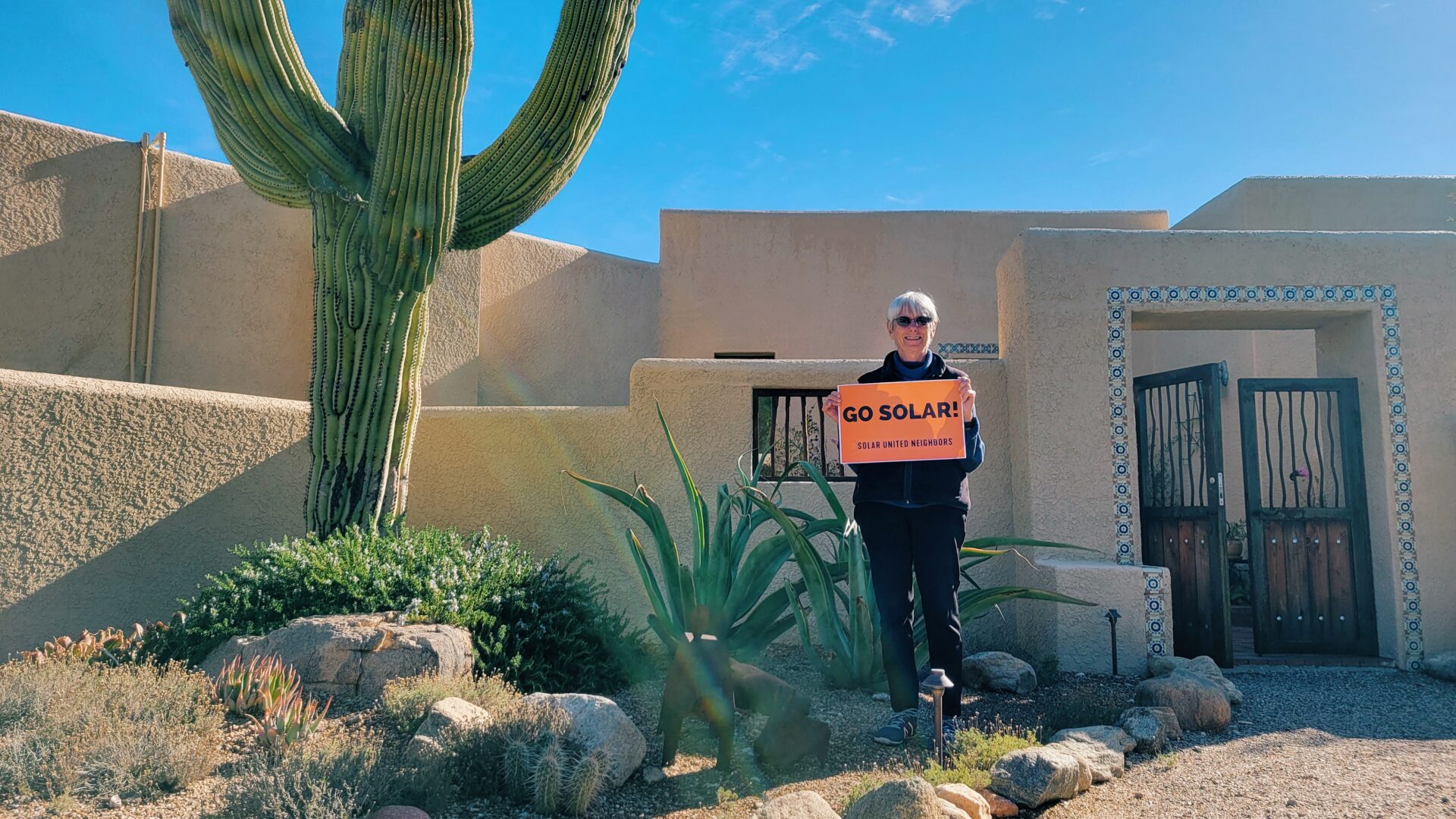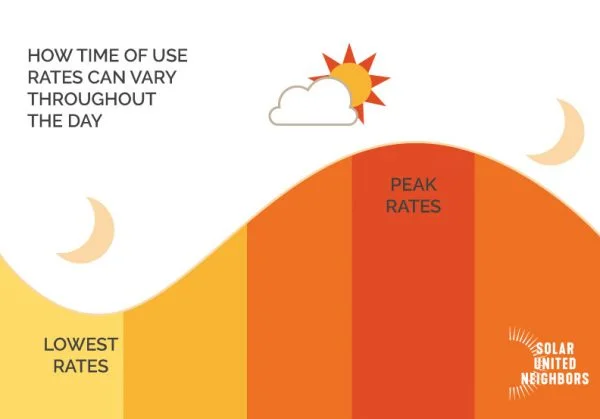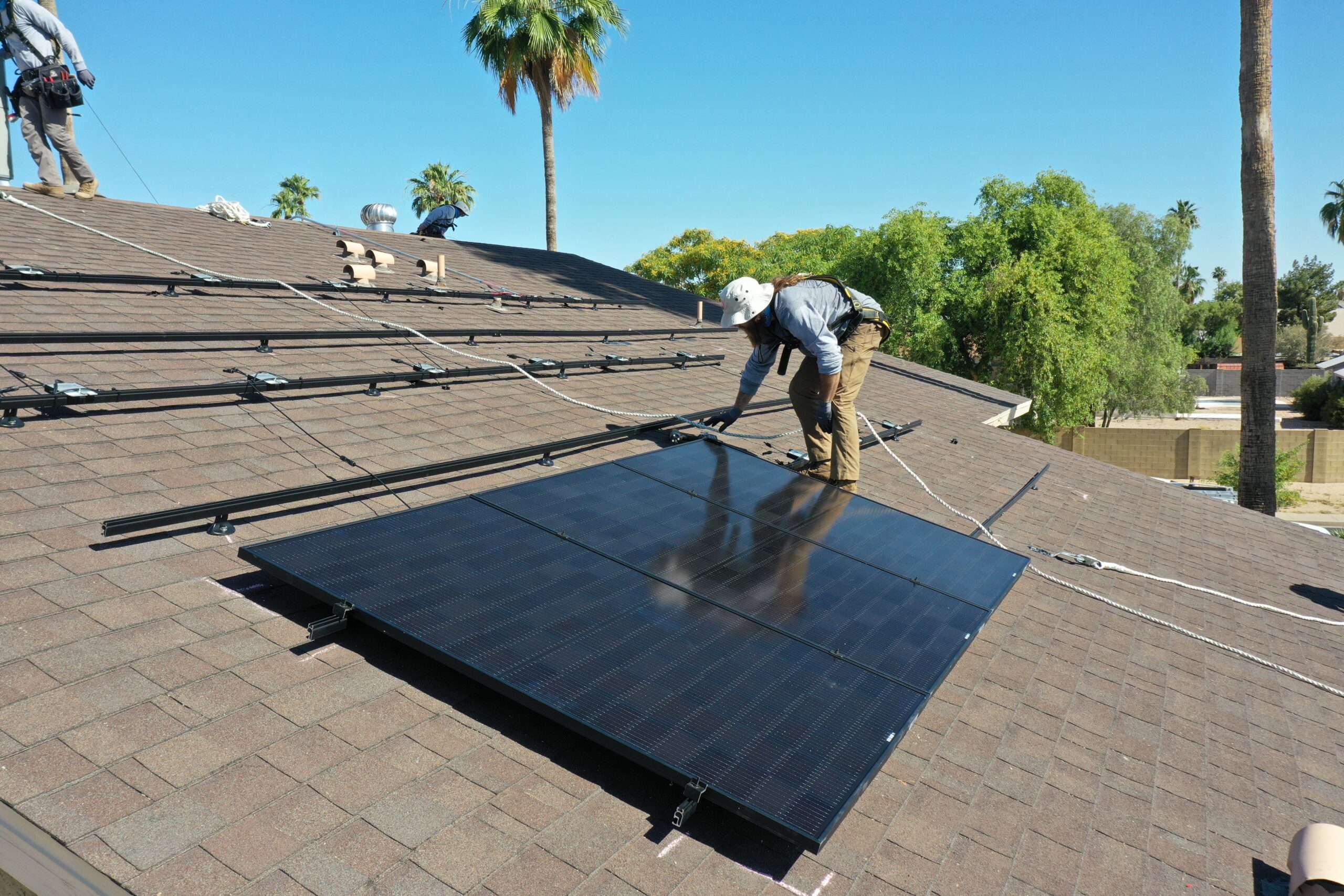Time of use rates and solar
- Factsheet

The variable cost of electricity production
On a hot summer day, many of us crank up our air conditioners. The demand on our electric grid is high at times like these, when we’re all trying to keep cool. The same is true at peak demand times of day, like when we all get home from work and fire up our ovens and washing machines.
During these high-demand times, utilities have to turn on their least-used (and often polluting) electric plants to meet the increased need. Electricity from these plants is often more expensive to generate and deliver. And yet, most of us pay the same amount for the electricity we use, regardless of when we use it.
What time of use rates, this variation is reflectedWith time of use rates, this variation is reflected

Some utilities have developed a way of charging customers that reflects variations in demand. They’re called “time of use” rates (TOU) or “time varying rates.” With TOU rates, customers typically pay more for electricity during the day than during early morning or late evening hours.
Benefits of time of use ratesBenefits of time of use rates
The goal of a time of use rate structure is to integrate real-life market conditions in electricity rates, and to encourage customers to be mindful of their energy use. By charging more for electricity when demand is high, many customers will try to use less electricity in those periods.
When implemented well, time of use rates can:
- help customers save money,
- reduce stress on the electric grid,
- reduce the need to build more infrastructure and power plants, and
- incentivize the use of smart appliances, rooftop solar, battery storage, and electric vehicles
What makes for a fair time of use rate structure
Time of use rates should be easy for customers to understand
Utilities should provide customers with resources to reduce their electricity bill. Customers should be armed with their usage data and the means to draw meaningful conclusions from that data when considering whether a time-of-use rate is right for them. Utilities that are considering time of use should show customers what their current bill would be with this new rate before they use the new rate. This is called “shadow billing”. Shadow billing can help you understand how time of use rates would affect your monthly bill. It can also show you what actions have the most impact to reduce it.
Time of use rates should make it easy for customers to change their habits
Customers save money under time of use by shifting the time of day when they’re using a significant amount of electricity. This could mean waiting until the late evening to run the dishwasher or keeping the thermostat a degree or two higher on a warm day. Utilities should design their time of use rates so the electricity price spikes are short and once a day. This makes it easier for customers to adopt more energy efficient habits.
Time of use rates should maintain fair credit for solar and encourage all forms of energy independence
Solar homeowners should still receive the full retail value of the electricity their systems produce. They should not be targeted with reduced compensation or extra charges. Time of use should allow customers to use several technologies at once. Many solar owners also have battery storage or an electric vehicle. Utilities should establish time of use rates that allow these customers to maximize the value of all these investments.

How time of use rates impact solar
Time of use rates may influence the way your system is installed and your payback time. Installers will typically orient the system (which way the panels face and at what angle) to maximize the amount of energy it produces over a year. Everything else being equal, you will typically want your solar panels to face southward.
With time of use rates, you will want to orient the system to produce the most electricity when the cost of that electricity is highest. It may be better for your panels to angle toward the west. This will allow them to better capture sunlight toward the end of the day. This is when the demand and therefore the price for electricity is higher. In rare cases, east-facing panels may also produce power when electricity prices are higher.Read below to learn how time of use rates work, how they impact solar, and how we can make time of use fair for everyone.
Learn more: how exactly time of use rates workLearn more: how exactly time of use rates work
Time of use rates can vary according to the time of day, season, and even the kind of day (for example, weekday vs. weekend). Under a time of use rate structure, the price you pay for electricity increases at times when the demand for electricity is high. It decreases when the demand for electricity is low.
The variation between the high and low points of these rates will differ from utility to utility as they are dependent upon your location. Some regions see greater ‘peak demand’ for electricity in the winter for heating (for example, Boston). Other places see it in the summer (for example, Phoenix) for cooling. There are also variations during different times of day depending upon heating or air conditioning usage.
One utility that uses time of use rates is Fort Collins, Colorado. From May through September, Fort Collins homeowners pay a higher ‘peak’ rate for their electricity on weekdays between 2 p.m. and 7 p.m. The time window for peak rates the rest of the year is shorter. In these months, the peak is from 5 p.m. to 9 p.m. on weekdays.
Watch our TOU webinar
Learn more about Time of Use (TOU) with a concrete example from Dominion Energy in Virginia.
Get the latest on solar straight to your inbox.
Fight for your solar rights.
Everyone has the right to go solar. Spread the sunshine nationwide and in your local community by taking action, joining events, and more.
